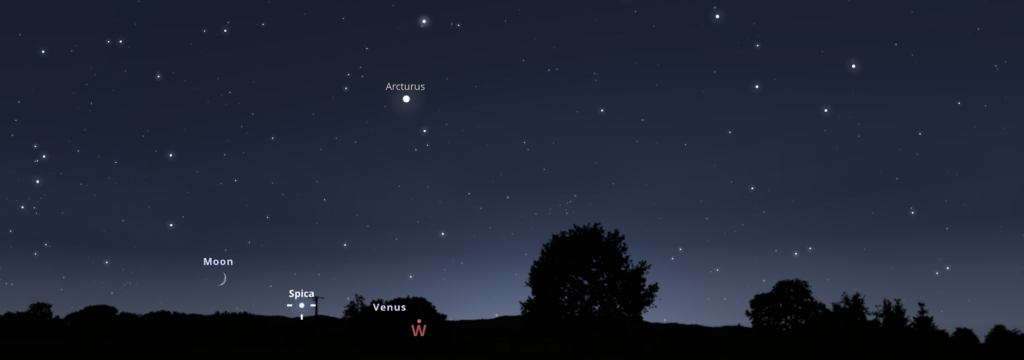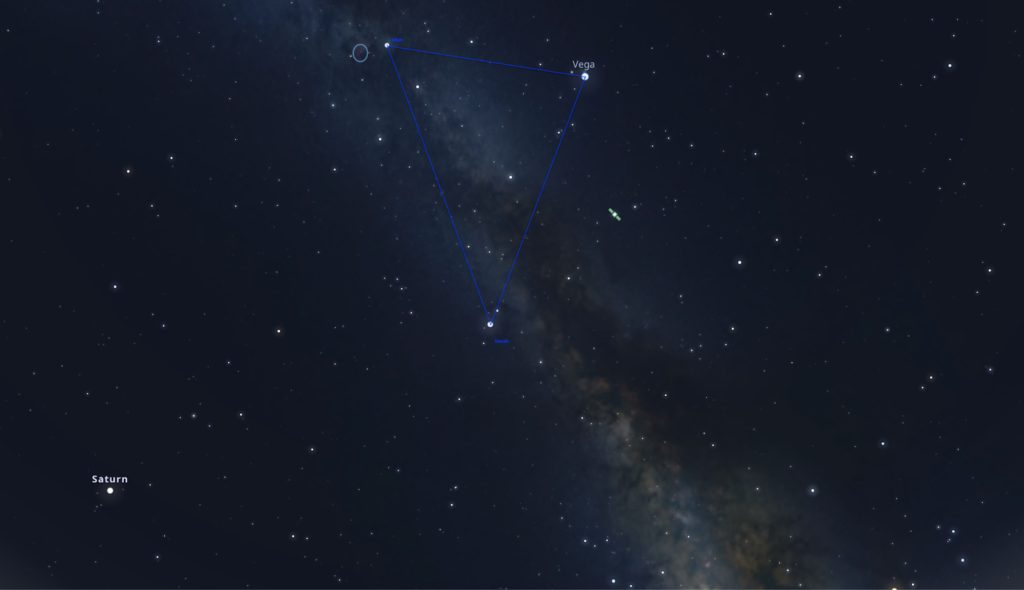On September 22 at 12:44 UT the Sun passes through the September equinox (located in the constellation Virgo), ushering in autumn in the northern hemisphere and spring in the southern hemisphere.
On that day the Sun remains twelve hours above the horizon and twelve hours below it, rising exactly in the east and setting in the west.
The planets visible to the naked eye are taking over the night sky.
Saturn will be in opposition to the Sun on the 8th and will therefore be visible all night in Aquarius.
Later, Jupiter in Taurus will be visible most of the night.
A little later, Mars in the second half of the night between Taurus and Gemini.
Mercury at dawn in the first half of the month between the twilight lights, while Venus at dusk all month, also between the twilight lights.
The planets only visible with telescopes will be observable throughout the night: Uranus in Taurus, while Neptune, which will be in opposition to the Sun on the 21st, in Pisces.
On the evening of Friday, September 6, there will be an occultation of Spica (Alpha Vir) by the Moon.
It will be visible from all the islands of the Canary archipelago, except Lanzarote.
It will take place in broad daylight, but as the Moon will only be 11% illuminated, if the sky is transparent it should not be too difficult to follow the phenomenon.
Between the islands of Fuerteventura and Lobos, the occultation will be grazing.
In the early morning of Wednesday, September 18, a small partial lunar eclipse will take place, although it will be perfectly observable throughout its course.
The partial will be very shallow, only 8.7%.
Sunrises and Sunsets
Calculated for a latitude of 40 degrees north and longitude 0 degrees, and with a theoretical horizon:
- Day 05: DEPARTURE at 5h 16m; DEPARTURE at 18h 08m
- Day 15: DEPARTURE at 5h 25m; DEPARTURE at 17h 51m
- Day 25: DEPARTURE at 4h 34m; ARRIVAL at 17h 35m

Photo: Looking in NE direction with binoculars of 5º field of view at about 7º from the horizon at 06:10h on September 9, 2024 from the sky of Barcelona.
Mercury and Regulus are observed only 0.5º away.
(Source: www,.stellarium.org

Photo: Looking in a west-southwest direction between September 5 and 7 at dusk, towards the middle of twilight.
(Source: www,.stellarium.org
Planets to see in September
Mercury, can be seen during dawn over the east-northeast horizon, most easily during the first third of September and especially well between days 4 and 8.
On the 5th it reaches maximum elongation, separating 18.1º west of the Sun.
The last third of the month is not visible because it passes through its superior conjunction on the 30th.
Venus, is visible during evening twilight at low altitude above the western horizon.
It shows magnitude -3.9 in Virgo.
Mars, is observed at magnitude 0.6 as early as midnight, at first low over the east-northeast horizon and in the early morning higher over the east.
It is located in the eastern end of Taurus during the first days of September and in the western part of Gemini during the rest of the month.
During dawn it reaches quite high over the east-southeast.
Jupiter, It rises in the east-northeast before midnight, reaching high altitude over the southeast during dawn.
It shines at magnitude -2.4 in Taurus, where it is almost stationary at the end of the month.
Saturnis visible all night in Aquarius, culminating around midnight.
On the 8th it passes through its opposition, showing its maximum annual brightness (magnitude 0.6) and reaching its minimum distance from Earth, on this occasion 1.295 million kilometers.
At the end of the month its sunset occurs a few minutes before it begins to get clear.

PhotoLooking in a southwesterly direction on September 6 at the beginning of sunset.
We will find the Summer Triangle with Vega at 260º Azimuth and a height of 77º above the visible horizon.
(Source: www,.stellarium.org
Eclipses this month
A partial lunar eclipse occurs on September 18, although of very low magnitude.
It is visible in the early part of the night in South America and eastern North America and well into the early morning in Spain.
It is a brief partial eclipse, lasting just over an hour, since the Moon only grazes the southern part of the Earth’s shadow and therefore only the northern polar region of our natural satellite is darkened.
The eclipse begins at 2:12 UT, reaches its maximum at 2:44 and ends at 3:16 UT.

Meteors
- September Epsilon Perseids (208 SPE). Active radiant from September 5 to 21, with a maximum on September 9, with a ZHR of 5 meteors/hour, (AR = 48°, D = +40°).
Entry velocity: 64 km/s.
Moon age = 12 days.
- Diurnal sextants (221 DSX). Active radiant from September 9 to October 9, with a maximum on September 27, with a ZHR of 5 meteors/hour, (AR = 156°, D = -02°).
Entry velocity: 64 km/s.
Moon age = 23 days.
Moon phases in September
- New Moon Tuesday, September 3 at 01:55 UT in Leo
- Crescent on Wednesday, September 11 at 06:06 UT in Ophiuchus
- Full Moon on Wednesday, September 18 at 02:34 TU in Aquarius
- Waning Quarter on Tuesday, September 24 at 18:50 TU in Gemini

Photo: Santiago Casanova, member of the Agrupación Astronómica de Sabadell.
GC 2467 is a star-forming region, popularly known as the “Skull and Crossbones nebula” whose appearance has also occasionally been compared to that of a colorful baboon.
It includes areas where large clouds of hydrogen gas incubate new stars.









